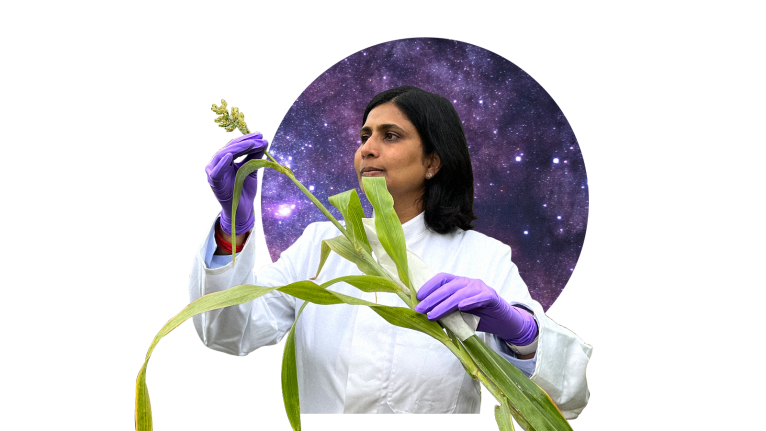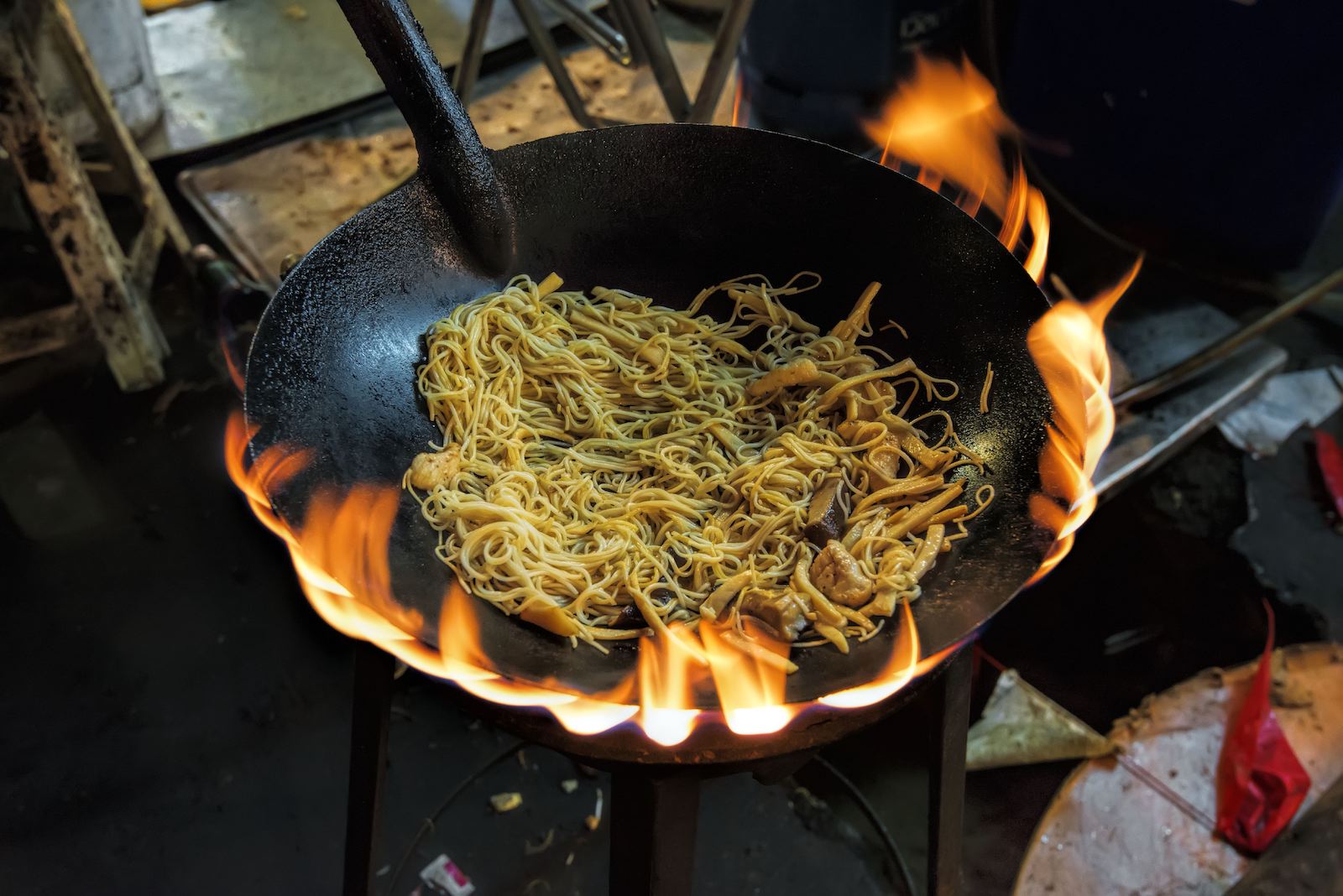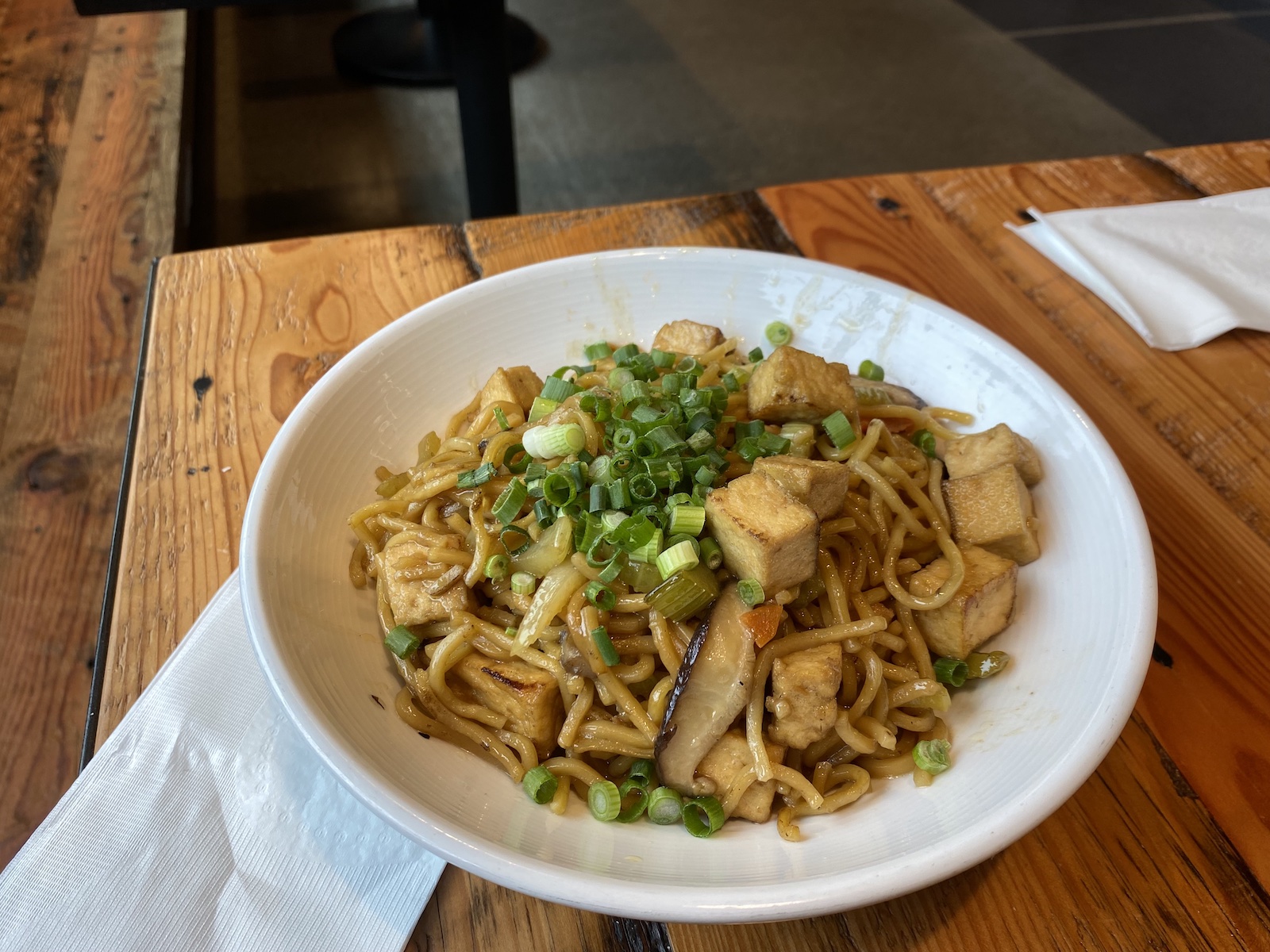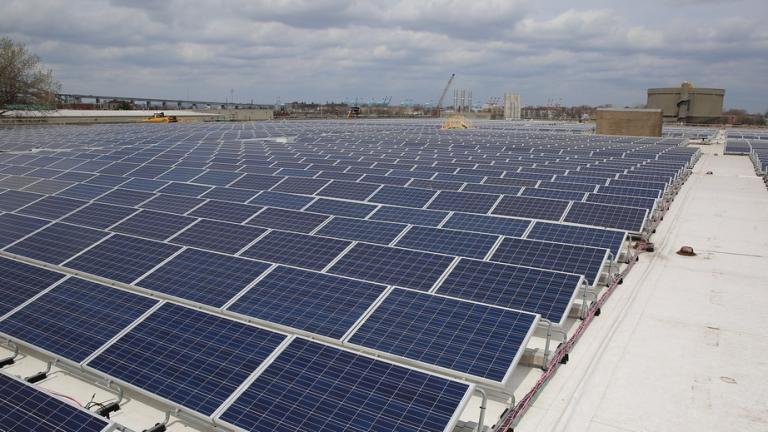The first thing you notice walking up to a dai pai dong, one of Hong Kong’s signature open-air street food stalls, is the smoke. Aromatic plumes billow out from aluminum-covered vent hoods as chefs with decades of experience produce steaming plates of crackled shrimp, juicy mussels, and crisped-up rice by tossing the ingredients in a giant, flame-cradled wok.
As a foodie and avid stir-fry consumer, I love everything involved in wok cooking — the artistry, the bursts of orange under the deep, round-bottomed pan, the incomparable taste. But as a climate reporter, I see just one problem: It typically relies on gas stoves, which release planet-warming methane even when turned off.
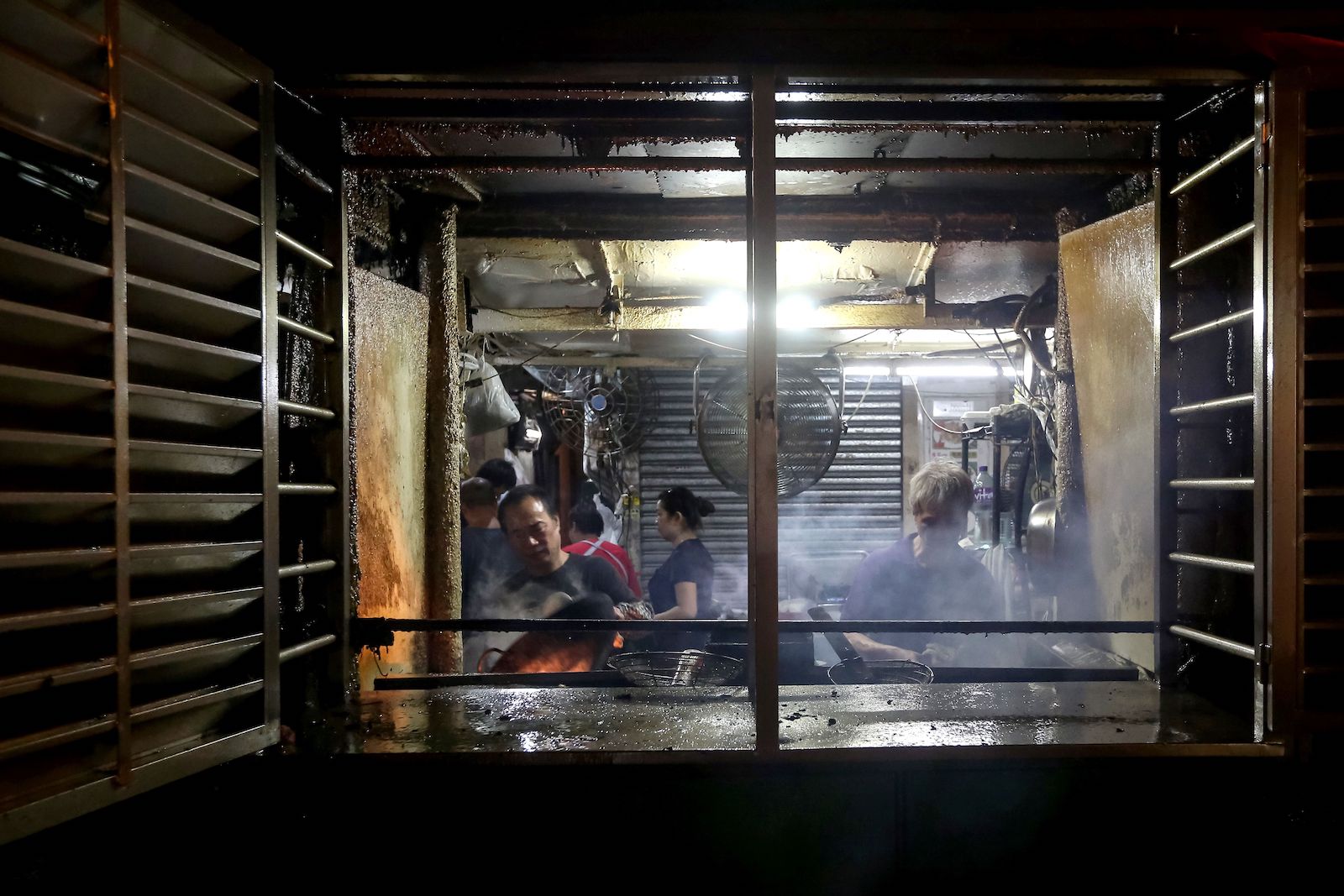
Climate experts say that we need to phase out fossil fuel use to address the climate crisis, especially in buildings, which account for 35 percent of U.S. greenhouse gas emissions. Gas stoves also produce harmful air pollutants like carbon monoxide, nitrogen dioxide, and benzene, a known carcinogen.
So when I heard that an all-electric food hall on Microsoft’s campus in Redmond, Washington, featured a pair of custom-made induction woks, I was eager to try out a climate-friendly stir-fry. Unlike gas stoves, induction ranges use electromagnetic currents to heat food, eliminating both the carbon emissions and harmful air pollutants produced by gas. Yet minutes into my lunch with a friend who works at Microsoft, my excitement dissolved. My tofu noodles arrived limp and drowning in vegetable oil.
As I poked at my soggy introduction to induction wok fare, I couldn’t help but think back to a plate of noodles I had eaten at a dai pai dong in Hong Kong just a few weeks before. The two noodle dishes could not have been more different. One was prepared with state-of-the-art climate tech — yet produced lukewarm results. The other was freshly tossed in a kerosene-fueled wok, yielding glossy, chewy noodles bursting with soy sauce, blackened slivers of onion, and, most importantly, that elusive, umami-filled char called wok hei.
There were many differences between the stir-fry noodles I bought from a dai pai dong in Hong Kong (left), and the plate I of noodles I got from Microsoft’s all-electric food hall in Redmond, Washington (right). Akielly Hu
Wok hei, loosely translated from Cantonese as the “breath of the wok,” represents the pinnacle of the stir-fry cooking technique most commonly associated with southern China. (While many cuisines rely on the wok, not all strive for that signature aroma.) From street food stalls to high-end restaurants, diners from all over the world seek the intangible flavor that renowned chef and wok whisperer Grace Young described as “a special life force or essence from the wok.”
For all its coveted glory, wok hei — and the question of what exactly produces it — remains somewhat mysterious. The term itself is fairly abstract: while wok refers to the cooking vessel, hei can simultaneously mean “air,” “breath,” “energy,” and “spirit,” leaving room for a variety of interpretations. Many chefs say that fire, and therefore a gas stove, is essential for achieving the aroma, putting it at odds with climate-driven legal trends: Since 2019, more than a hundred local governments across the United States have introduced policies to ban the use of natural gas in buildings, including gas stoves. Others argue that with high enough temperatures and a few adjustments, chefs can switch to induction and still produce foods with wok hei.
In the face of this gastronomic debate, many chefs are asking what an all-electric future will mean for cherished culinary traditions like wok cooking.

When the city of Berkeley, California, enacted its local gas ban in 2019, the California Restaurant Association sued, arguing that gas is essential for certain specialty techniques, including “the use of intense heat from a flame under a wok.” It wasn’t the only attempt to derail gas bans. An investigation by the Sacramento Bee, for example, revealed that the gas utility SoCalGas actively recruited Chinese American restaurant owners to advocate against electrification policies in Southern California.
It would be naive to say gas utility companies were driven by a love of great stir-fry when they turned their lobbying efforts toward wok-based cooking. But the culinary debate around whether wok hei can be achieved over an induction stove has certainly added fuel to the electrification debate.
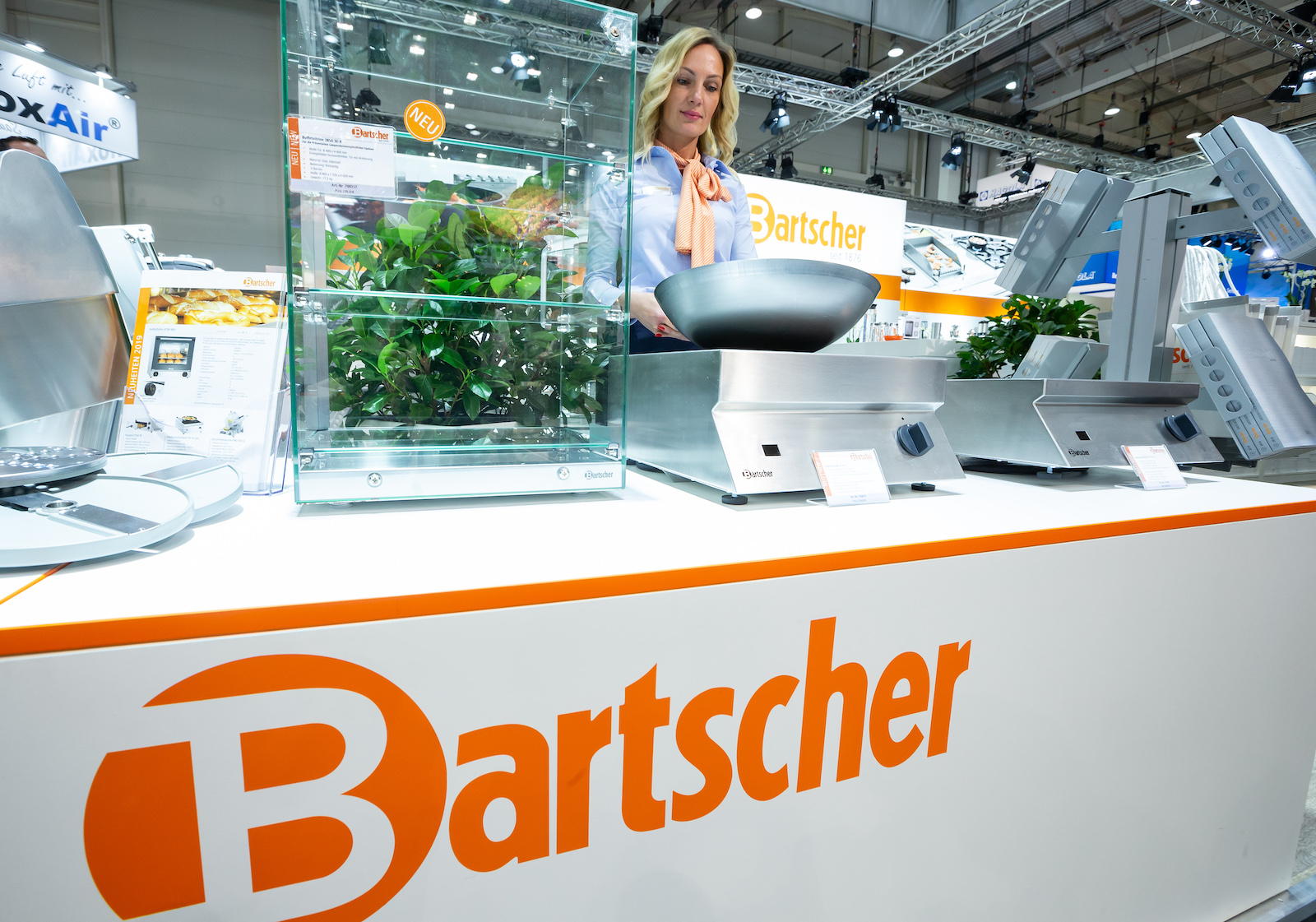
For chefs, the most important consideration when it comes to switching off gas is whether induction can support their livelihoods. In cities like San Francisco and Los Angeles, some restaurant owners serving Chinese, Thai, and other Asian cuisines using woks have expressed concerns that local gas bans could jeopardize signature tastes and textures.
Whether individual chefs think that induction can achieve wok hei depends largely on how they define it. Wok cooking expert and food writer J. Kenji López-Alt, for example, defines wok hei as a quintessential smoky flavor. He told Grist that it’s impossible to achieve wok hei without gas or fire — and the reason comes down to the food science.
A number of different elements go into that signature smoky aroma, according to López-Alt. One is the flavor imparted from hot, well-seasoned carbon steel or cast iron, two of the most common materials used to make woks. Another component is the caramelization that happens when sauce hits a searing hot pan. If you “watch a Chinese chef cooking, when they add soy sauce to a stir-fry, they swirl it around the outside of the pan where it immediately sizzles and gets intense heat, and that changes the flavor and gives it a bit of smokiness,” he said.
But the main flavor component flavor of wok hei, López-Alt says, comes from the igniting of aerosolized oil with fire. As chefs toss food up into the flames of a gas stove, tiny droplets of fat suspended in the air catch on fire, dripping back down into the wok to impart a subtle smokiness. “You can’t get that without an actual fire,” he said.
Martin Yan, restaurateur and longtime host of the PBS cooking show Yan Can Cook, has a different take on wok hei, which he defines as an ephemeral, fragrant aroma that lasts a mere 15 to 20 seconds after a dish is prepared. He told Grist that achieving that aroma depends not on fire, but on applying intense, high heat. When fresh ingredients hit the wok’s surface, they undergo a Maillard reaction, in which proteins and sugars break down and develop new, complex flavors. “The wok hei is not created by the gas,” he said. “It’s created by the frying pan and that chemical reaction.”
In theory, Yan said, the heat could come from any source: electricity, gas, even wood or charcoal. “You could use nuclear fusion, as long as you can create that intense heat.”
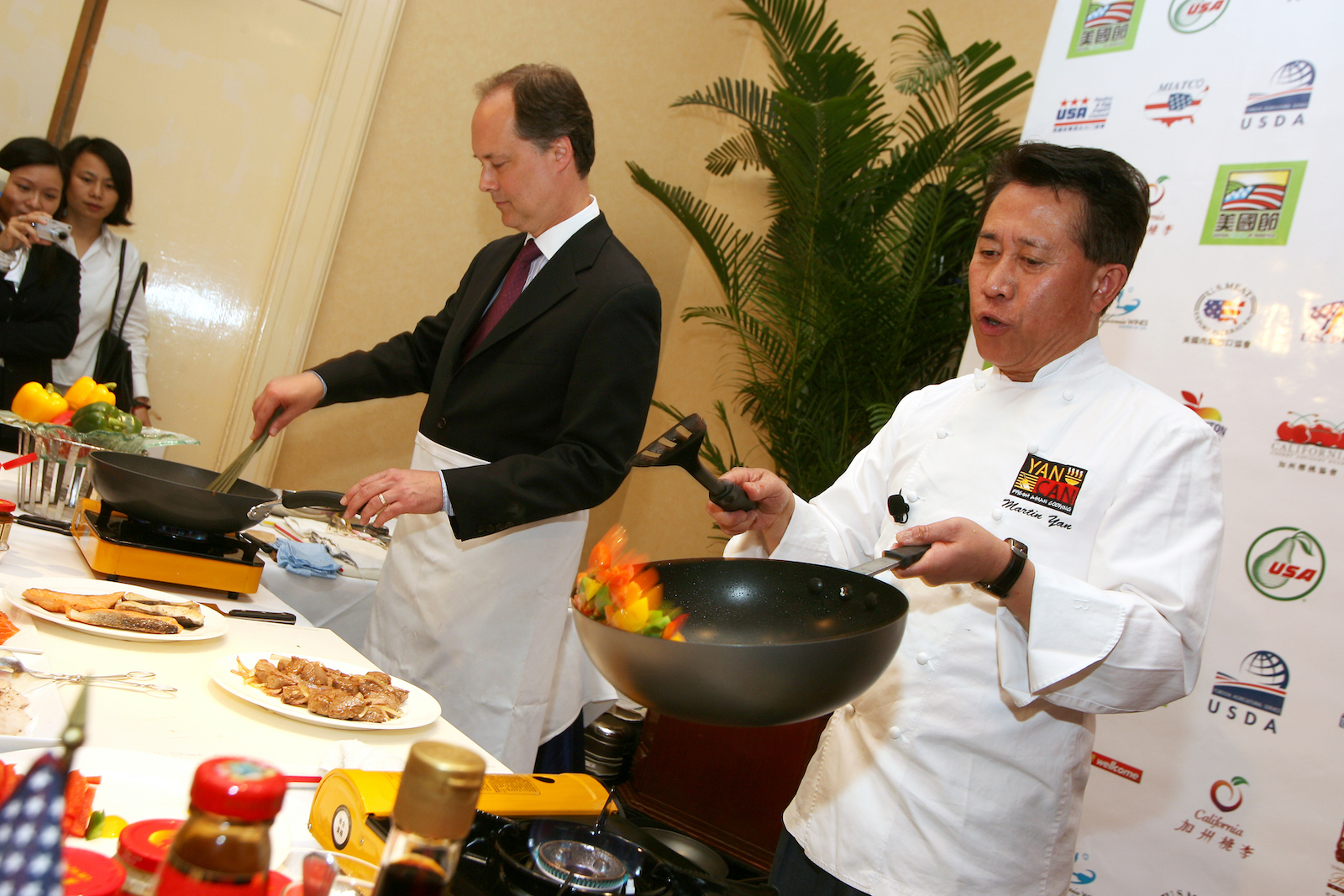
Induction stoves, which can instantly heat to temperatures of up to 643 degrees Fahrenheit, are capable of the intensity Yan describes as necessary for wok hei. Yet some chefs like López-Alt say that the shape of the wok presents another obstacle to using induction. Woks feature a deep, high-walled bowl, which allows flames to curl around the vessel and create varied temperature zones — ideal for moving sauces and ingredients around to optimize flavors and control heat. But induction stoves are typically flat and only activate when directly in contact with the pan’s surface. Lifting the wok to toss ingredients, therefore, would result in an instant loss of heating.
Jon Kung, a Detroit-based chef and TikTok personality who advocates for induction cooking, says that induction stoves designed specifically for woks can help with this issue. Like Yan, he defines wok hei as a “mix of char and caramelization” as a result of the Maillard reaction, requiring high heat rather than flames.
Kung owns two portable induction wok burners that feature a curved heating bowl in which the wok sits, allowing for better temperature control up the sides of the pan. While this setup may not totally replicate the temperature gradient present in a traditional fire-heated wok, Kung said the conditions are sufficient for producing high-quality stir-fry, a task he points out is difficult even for those with gas stoves at home.
“It’s incorrect to assume that the only things you need to achieve wok hei are a wok and a gas burner,” he said in a 2023 video. “The ones in Chinese restaurants have a power output of 150,000 BTUs. That’s way more than the 30,000 that comes out of your Viking range. The fact of the matter is, these induction wok burners do a better job at mimicking the focus of energy into the bottom of a wok that you get from a genuine Chinese wok burner.”

While Kung’s induction models plug into a typical outlet and are designed for home use, similarly shaped and far more powerful commercial induction wok ranges exist on the market — including at Microsoft’s all-electric food court. But the stove itself wasn’t the reason for the company’s substandard stir-fry. The noodles I ate there appeared to have been batch-cooked, an efficient way to feed hungry tech workers but a less-than-optimal method for achieving wok hei, which depends on the freshness of the ingredients. And since I wasn’t present at the time of cooking, I also can’t evaluate the temperature used for cooking.
As of now, I can safely say that my induction-versus-flame-fueled wok hei taste test remains inconclusive. And sadly, I don’t have many nearby options to gather more data. Although Yan reported that some hotels in China like the Hilton and Marriott already exclusively use induction woks, commercial induction kitchens are rare in the United States.
According to a 2022 survey by the National Restaurant Association, 76 percent of restaurants in the U.S. still use gas. That proportion goes up to 87 percent for full-service restaurants, or sit-down eateries that provide table service. Meanwhile, less than five percent of U.S. households currently use an induction stove — though wok expert Grace Young has said she’s often asked which wok to buy for induction and glass-topped ranges.
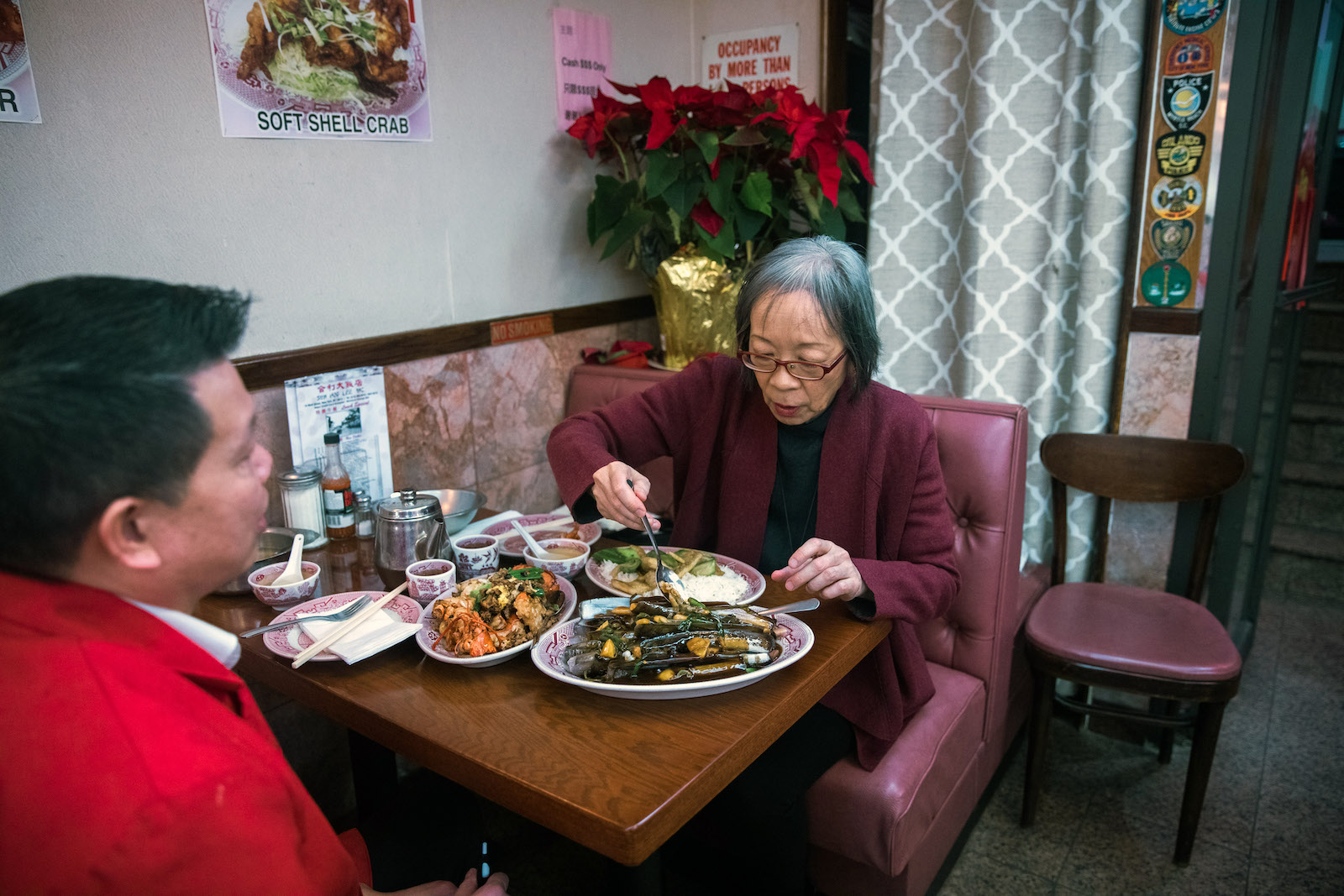
A big reason for the lack of commercial induction uptake is the cost. Yan noted that induction wok burners for restaurants remain prohibitively expensive in the U.S., especially since the technology is still maturing. Upgrading a gas kitchen to accommodate all-electric appliances to begin with can require up to tens of thousands of dollars, an exorbitant price for businesses operating on thin profit margins. Commercial induction ranges also typically cost three to four times as much as gas-powered ones.
Kung told Grist that he is not aware of any restaurants in the U.S. achieving wok hei with induction — although he believes that with a few tweaks in technique, it’s “absolutely” possible. The problem, beyond the cost of induction ranges, is that chefs might also simply prefer the tactile experience of cooking with fire, or generally feel resistance to adopting new techniques. But Kung maintains that if governments want to take the climate crisis seriously, they need to pass policies to incentivize and help businesses switch to electric.
“Chefs are problem-solvers by nature,” Kung said, and will likely innovate and relearn how to achieve wok hei on induction at a commercial level.
Although López-Alt says achieving wok hei is not possible without a flame, he isn’t against induction stoves in general. He initially felt wary of switching when he first came across the debate over gas stoves a few years ago. Yet he eventually concluded that, for most Western cooking and home cooking, the technology can be just as good as gas if not better — not just for climate and health reasons, but also in terms of efficiency of cooking.
“It’s a topic that gets a lot of knee-jerk, immediate reactions,” he said. But “for most things it actually makes sense to get rid of gas.”
